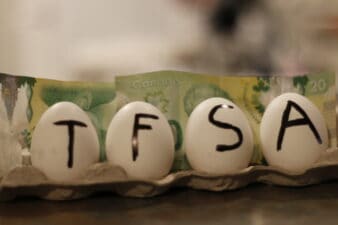The Tax-Free Savings Account (TFSA) is a perfect place to build your million-dollar portfolio, as it makes investment income tax-free. If you convert $100,000 into $1 million, the $900,000 investment income is tax-free. But can you earn such high investment income? This is where the power of compounding plays a crucial role. A $100,000 investment today that earns a 15% average annual return, compounded over 17 years, can give $721,126 in compounding interest.
How compounding can convert $100,0000 into a million-dollar portfolio
Compounding reinvests the investment returns to earn similar returns. Suppose you invest $1,000 and earn a 10% annual return of $100. Next year, your invested amount is $1,100, and this amount earns you a 10% return of $110. The amount increases significantly in 10 to 12 years.
Many growth stocks can generate compounding returns by reinvesting their net income in expansion and growth. They strive to achieve a certain return on equity (ROE). When looking for a growth stock, you can look for those that have maintained an average ROE of 15% over 10 years or above. Some years may give a 50% ROE, and some may give a negative ROE. The right time to invest in such stocks is during downtime.
Is diversification important, or is one Canadian stock enough?
Diversification is used to reduce the risk of a downside and sustain positive returns throughout the year. To take an example of ideal diversification, investing in gold, which rises in economic uncertainty, and a lender’s stock, which increases during economic growth, simultaneously. When a lender’s stock falls during an economic downturn, gold stock rises, balancing risk and return. However, it does not increase the total return on investment (ROI).
So, if you are looking to build a million-dollar portfolio, sometimes a single stock is enough. The remaining stocks you can buy with the intent to mitigate the risk that comes with that single stock.
The only Canadian stock you’ll need
Constellation Software (TSX:CSU) stock alone can help you build a million-dollar portfolio using the power of compounding. The stock has maintained a 10-year average ROE of 38% because of its business model.
The company operates six holding companies, and each company acquires small, vertical-specific software companies that enjoy recurring cash flow from maintenance. Constellation maintains secrecy around its acquisition targets to avoid a bid war, as that would lead to paying a premium for a company. When the acquisition cost is high, the ROE reduces. Most of its acquisitions are all-cash deals because cash is a depreciating asset that loses value to inflation.
The cash it gets from the acquired company is reinvested to acquire another company, following similar rules of acquisition price, ROE, and cash yield. If the technology sector or the stock market is bearish, it is nirvana for Constellation as it ups its acquisitions during that time. It even reports borrowing funds as the discounted price of companies makes up for the borrowing cost. Moreover, interest expense is tax-deductible.
Some of its companies have grown big enough to be listed publicly, such as Topicus.com and Lumine. Constellation doesn’t give high dividends, as it reinvests most of the cash in acquiring new companies.
Is now a good time to make a bulk investment for a million-dollar portfolio?
Constellation Software stock is currently down 16.5% from its 52-week high. At $4,422, Constellation is a sweet deal as investors seem to have overreacted to the second-quarter earnings miss.
The company’s net income decreased by 68% to US$56 million, even though its revenue surged 15% year over year. Behind the lower net income were two one-off expenses: foreign exchange loss and TSS membership liability revaluation. Since Constellation reports its earnings in U.S. dollars, the tariff war has created a foreign exchange loss. However, it does not affect Constellation’s long-term compounding cycle.
The dip from the short-term foreign exchange risk has created a buying opportunity. The recovery of the stock price to its 52-week high of $5,300 in a growing economy alone could generate a 20% return.








